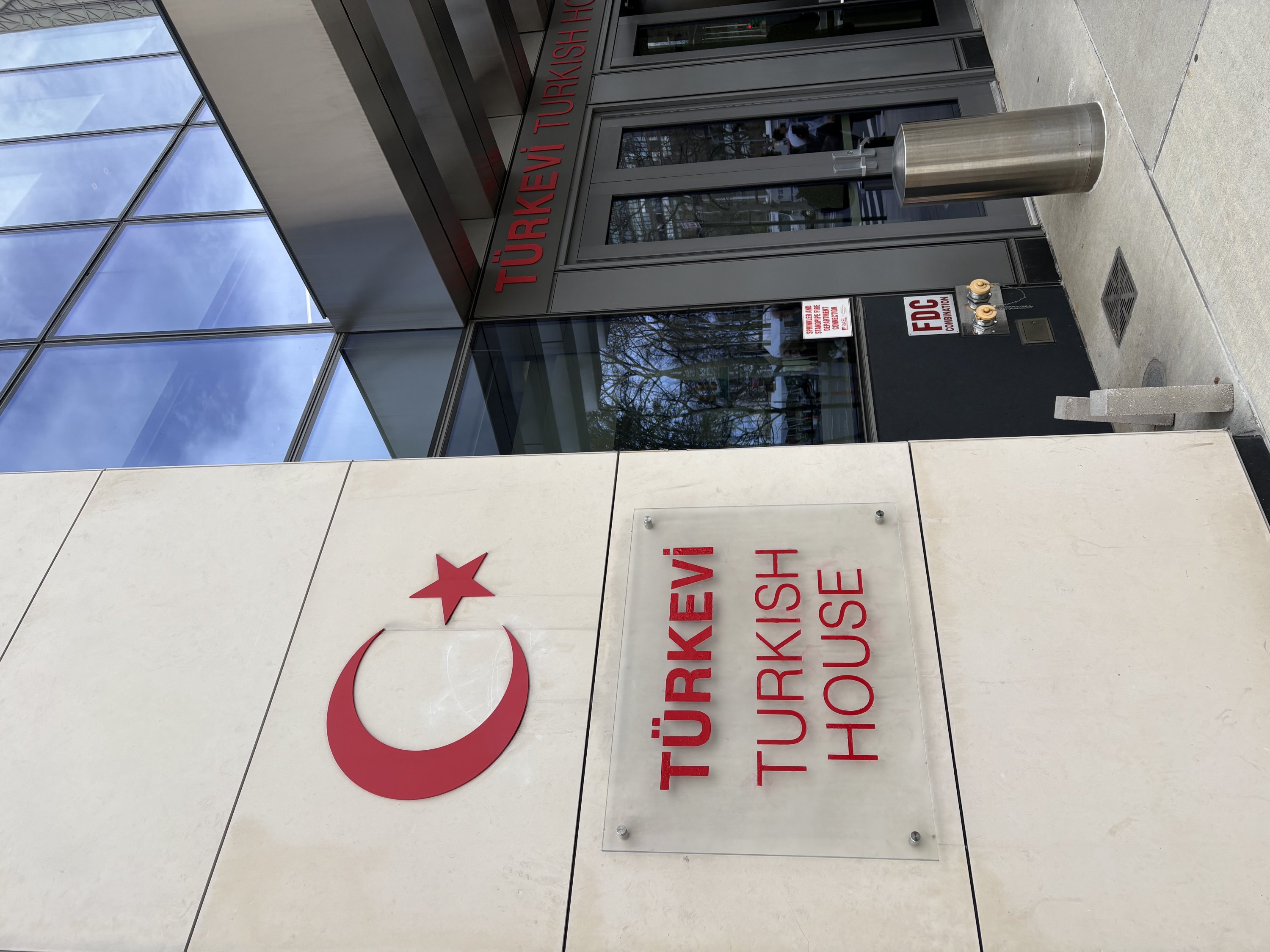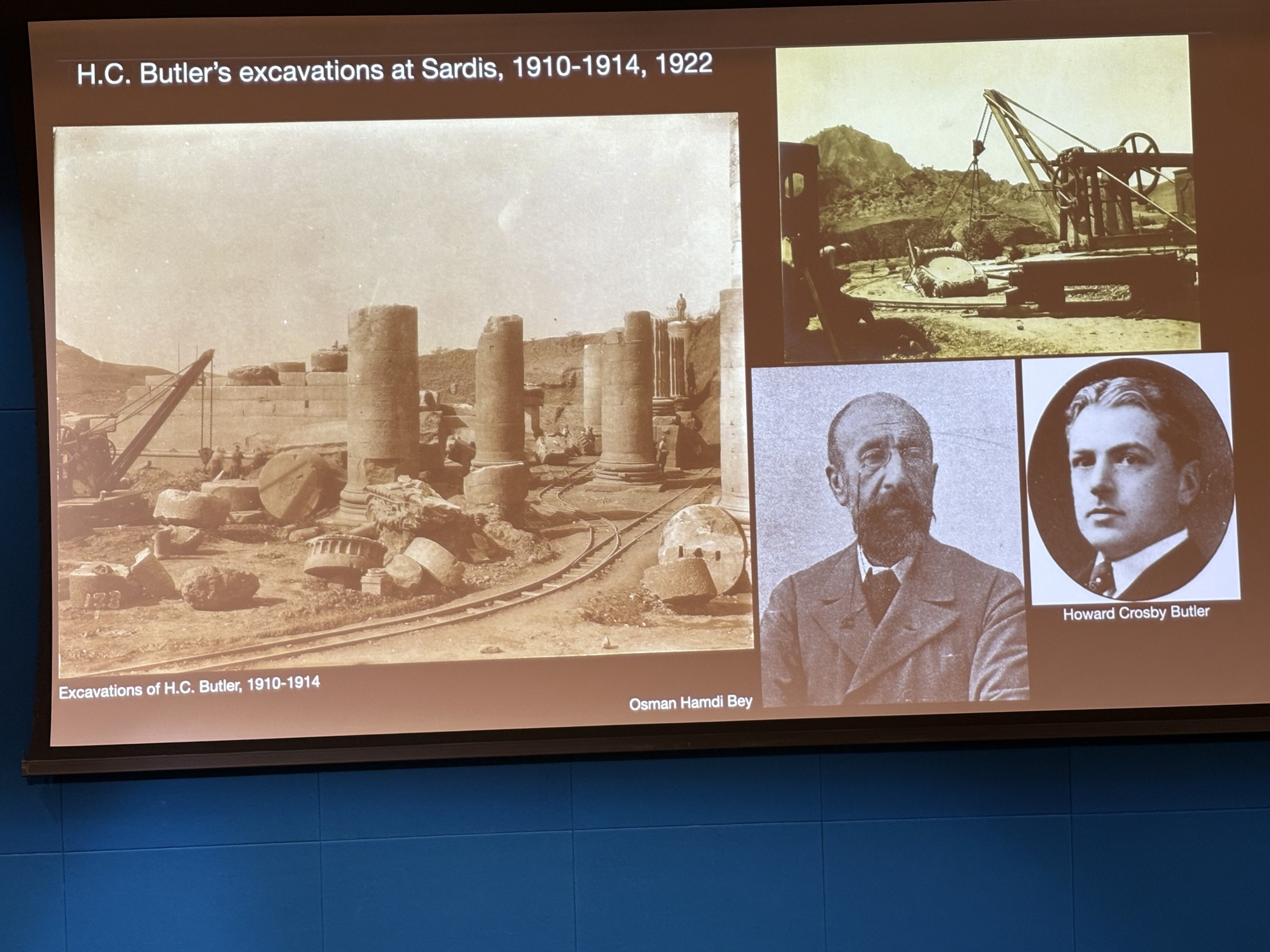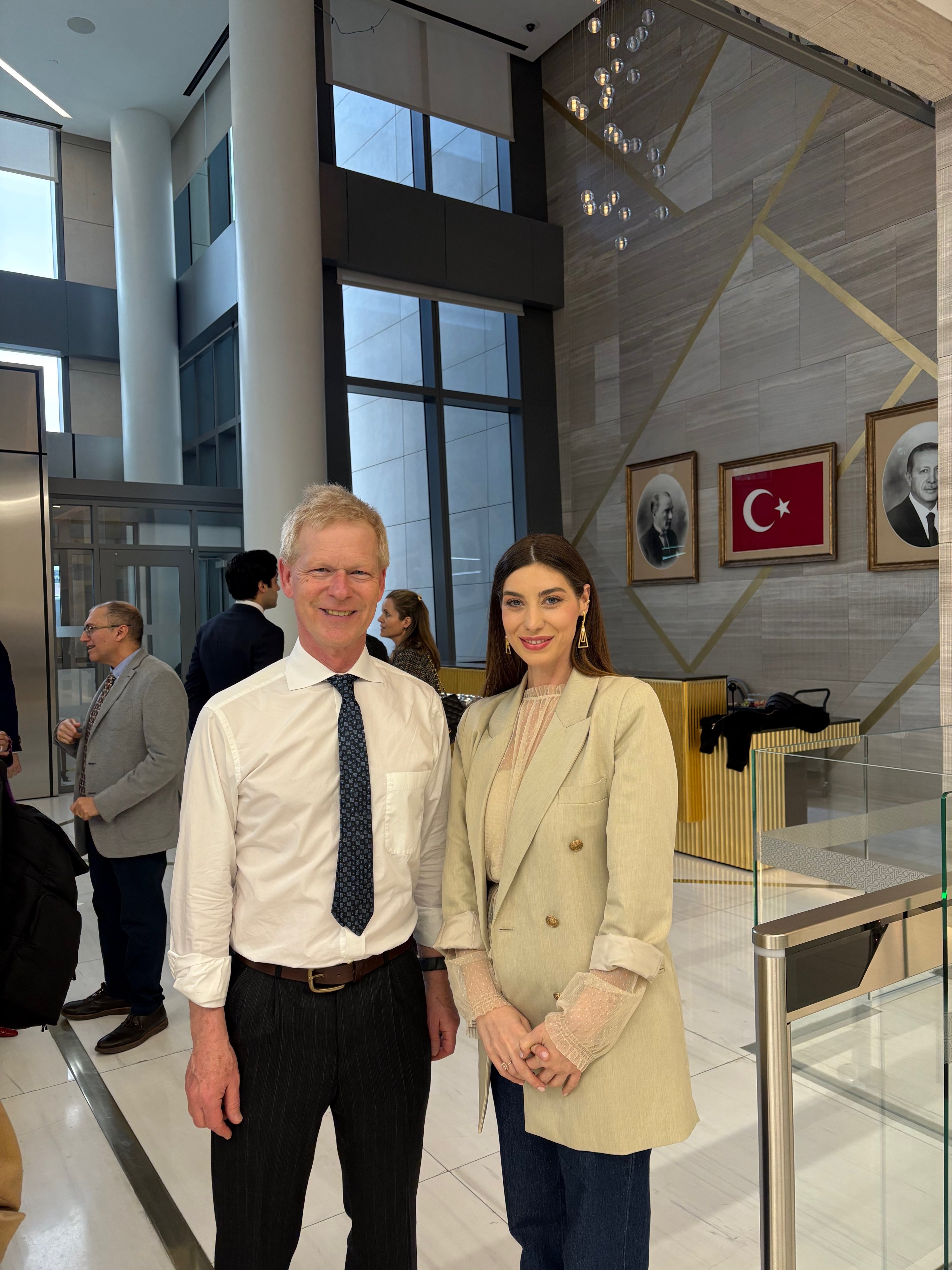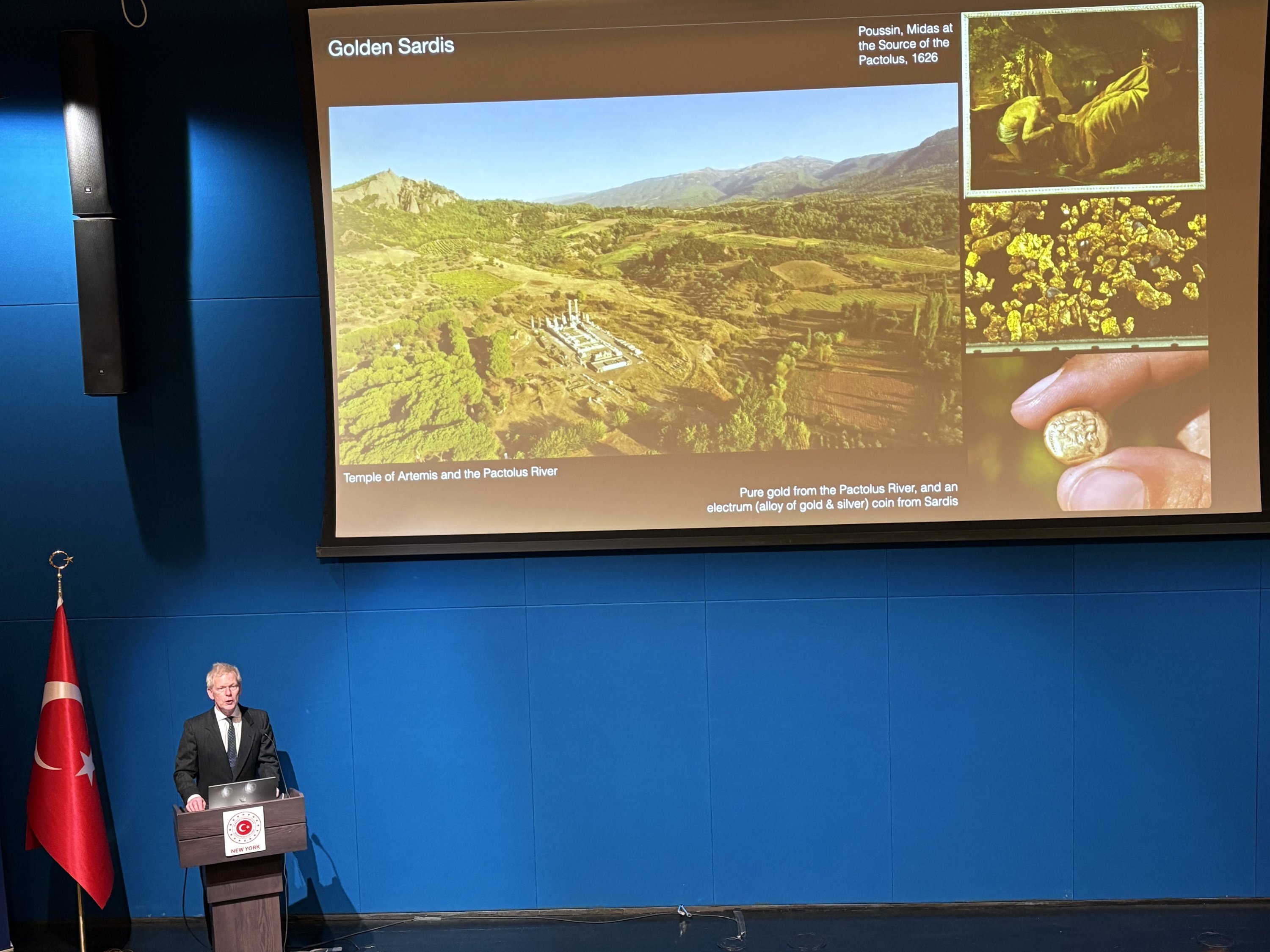© Turkuvaz Haberleşme ve Yayıncılık 2025
Following the talks on Göbeklitepe, the Turkish House (Türkevi) in New York City hosted the second installment of the “Cradle of Civilizations” series, focusing on Sardis, the ancient capital of the Lydian Empire. The event, led by Professor Nicholas Cahill, director of the ongoing archaeological excavations at the site, offered an in-depth exploration of Sardis's historical significance, archaeological discoveries and its role as a major center of commerce, religion and governance in antiquity. Organized as part of Türkiye’s efforts to share its cultural heritage internationally, the program drew the attention of scholars, diplomats and history enthusiasts.
Sometimes, history feels like it’s not just something from the past, but something still alive and speaking to us. That’s how I felt one evening in New York, sitting in the modern Turkish House, excited to learn about Sardis for the first time as Cahill brought the ancient city to life.

The second panel of the “Cradle of Civilizations: Anatolia” series focused on Sardis, the once-glorious capital of the Lydian Kingdom, located in what is now Salihli, Manisa, in western Türkiye. I wasn’t just attending a talk. I was witnessing a cultural reawakening, a vivid retelling of the deep layers of history that lie beneath the soil of Anatolia.
Cahill, who has been leading the archaeological excavations at Sardis under the auspices of Harvard and Cornell Universities since 2008, took us on a captivating journey not just through ruins and relics, but through time itself. With every image and every discovery he presented, he brought us closer to understanding the richness of this forgotten city.

What makes Sardis special? For starters, it’s where coinage as we know it was born. The first coins were minted here, an innovation that revolutionized economies and empires. It was also the starting point of the famous Royal Road, which stretched all the way to Susa in Persia, a route of trade, diplomacy and power. And let’s not forget the iconic Artemis Temple, still standing with proud silence, or the tumuli of Bin Tepeler, the burial mounds that tell tales of ancient royalty.
But the story of Sardis isn’t just a historical narrative. It’s a reminder of the layers of civilization resting beneath our feet in Anatolia. Layers that still breathe. Layers that demand to be understood, protected and most importantly shared.

The crowd at Turkish House, filled mostly with international guests, was visibly moved. After the presentation, questions poured in: “How do we get there?” “When is the best time to visit?” “Can we see the excavations?” It was heartening to witness this level of interest for a site that often remains in the shadow of more famous names like Ephesus or Troy.
What I found particularly powerful was that this wasn’t just an academic presentation but a form of cultural diplomacy. It was Türkiye telling its story not through politics or tourism ads, but through truth, depth and history. It was a moment of pride, not just for archaeologists or historians, but for anyone who believes that culture is a bridge, not a wall.

Sardis is a place that demands to be seen. Though I have yet to witness it firsthand or walk among its sunlit columns, I can confidently say that it is a site that speaks volumes if only we take the time to listen. Events like the recent one at the Turkish House are helping bring its rich history to a wider audience, encouraging more people to hear its story and, hopefully, visit this remarkable ancient city. With its layers of history and cultural significance, Sardis is a destination that shouldn’t be missed. Sometimes, the past travels far to find its voice again. This time, it spoke from Anatolia to New York and the echo is still ringing.
